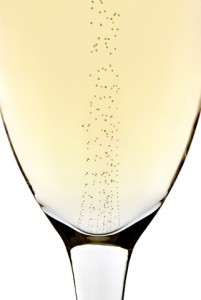 Following the hectic bustle of Christmas shopping, travel and choices galore, it’s refreshing knowing that buying the ideal wine for New Year’s Eve is an uncomplicated decision. The tradition poured into the magical midnight toast only seems possible if you see tiny bubbles dancing in the glass. Not to say other wines, beers and spirits are not welcome at the occasion, but something about the sound of Champagne flutes clinking in a toast as the clock strikes midnight makes it an unquestionable choice.
Following the hectic bustle of Christmas shopping, travel and choices galore, it’s refreshing knowing that buying the ideal wine for New Year’s Eve is an uncomplicated decision. The tradition poured into the magical midnight toast only seems possible if you see tiny bubbles dancing in the glass. Not to say other wines, beers and spirits are not welcome at the occasion, but something about the sound of Champagne flutes clinking in a toast as the clock strikes midnight makes it an unquestionable choice.
THE HISTORY
Our fascination with Champagne is linked to its long history and an extensive list of contributors along the way, Dom Perignon undeniably the most famous. But a few other discoveries had to come before Perignon could declare: “Brothers, brothers, come quickly for I am seeing stars.”
Two of those developments occurred around the same time – the development of stronger glass for the bottle and an airtight cork closure. Before the
17th century, wine was stored in casks and individuals took their own fragile bottles to local wine merchants, where they were filled and an oil soaked rag acted as the cork. Things changed when King James I requested that Sir Robert Mansell, an Admiral of the Fleet, stop using wood for heating the furnaces that produced glass because of his fear they would not have enough oak for shipbuilding. Wood was replaced by sea coal, which created a higher temperature and produced a stronger glass. About the same time, cork was discovered and replaced the oil-soaked rag, and voila, the industry was on its way to what we think of when we drink modern-day Champagne.
THE BOTTLE SIZE
A typical Champagne bottle is 750 milliliters; however, many other bottle sizes exist. The rare sizes are also known by the names of biblical kings:
Magnum (1.5 liters), Jeroboam (3 liters), Rehoboam (4.5 liters) Methuselah (6 liters), Salmanazar (9 liters), Balthazar (12 liters), Nebuchadnezzar (15 liters) and the rare Sovereign, which holds 125 glasses for your guests.
THE TOAST
The toast is also part of the tradition and magic of Champagne, sparkling wine or anything that bubbles. As early as the sixth century B.C.- the Greeks were toasting to good health, longevity and loved ones. The gesture was not simply symbolic, as are today’s toasts, but much more literal and practical. Sixth-century wine drinkers were often served intentionally poisoned vino – a common way of dispatching a rival or solving social problems. Thus began the custom of the host pouringwine into a glass, taking a drink and then toasting while raising his glass to friends and guests.
The modern-day toast is not as complicated, but there are a few simple tips to remember. Be simple and meaningful to those who you are offering the toast, stand and be brief, and end on a positive note by offering “cheers” or “raise your glass” for those you are toasting.
THE LABELS
The label can be the trickiest part for consumers. Most Champagne or sparkling wine will be brut, which means dry, but also you’ll see sec (which literally means dry) but in terms of Champagne means off-dry. Demi-sec is a medium-dry style, with noticeable sweetness. The sweetest are douz and moelleux.